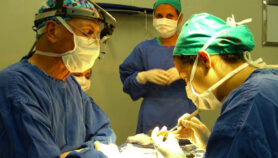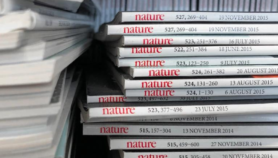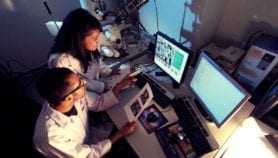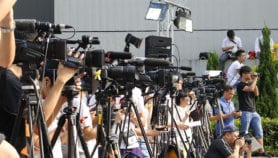By: Ian Hargreaves
Send to a friend
The details you provide on this page will not be used to send unsolicited email, and will not be sold to a 3rd party. See privacy policy.
One of the reasons journalists as a class aren’t much loved is that they tend to leap into tense situations, make hasty but vivid judgements and get out. Opinion surveys regularly place journalists somewhere between politicians and used car salesmen in the league table of ‘people you can trust.’
Scientists, by contrast, proceed by careful, peer-reviewed trial and error. They are accustomed to public esteem and to respect for their authority. Even today, following controversies over food safety and a series of medical scandals, scientists and doctors are still at the upper end of the trustworthiness rankings, although since BSE, if the word ‘government’ is placed in front of the word ‘scientist’, you get a rather different response. The question is whether chronic misunderstanding between scientists and the mass media matters, and whether anything can be done to alleviate it. My answer to both questions is yes, but not if we continue in our present ways.
Our present ways involve science operating from behind a barricade and berating the news media about their inaccuracy, prejudice and general ‘dumbing down’, whilst bemoaning the difficulty of winning public support for complex areas of scientific inquiry, such as biotechnology.
When I hear scientists talk about the media, I am often amazed at the way they veer between the measured languages of their own specialisations and a kind of saloon bar rhetoric about journalists (‘all arts graduates’) heedless of the public’s true interest (‘panic-mongers’). It is not that scientists are unaware of the need for popular and political support for their work. Protests about animal testing and genetically modified food are just two current illustrations which make the point.
But the Public Understanding of Science programmes which have been built up in the 15 years since the Bodmer Report led to the creation of COPUS (the Committee on the Public Understanding of Science) do not appear to have made matters much better.
Too many scientists still behave as if there is something called ‘truth’ or ‘the facts’ which they possess or are capable of discerning and which the public must be educated to comprehend. The media are characterised as the distorting lens obscuring communication between scientists and the public.
Although there has been some excellent work in the sphere of Public Understanding of Science designed to rid us of these over-simplified maps of communication and to chart the topography more accurately, the old maps are still very much in every day service. You can inspect them on a regular basis in The Lancet, for example, or the BMJ.
Thus, when the GM food controversy broke, politicians and scientists alike immediately pointed a finger of blame at the media for conducting what the Prime Minister called “an extraordinary campaign of distortion.”
Even a more considered analysis of media coverage of the GM affair, led by Professor John Durant of The Science Museum, for the House of Lords Science and Technology Committee, divided the media into ‘campaigning’ newspapers (by implication distorted) and ‘reporting’ newspapers (by implication reliable), when even the most cursory examination of the language and attitudes of both types of newspaper reveals a profusion of in-built assumption and prejudice — what social scientists more kindly label “social construction.”
This is not to defend the accuracy of Britain’s Express newspaper’s famous page one headline (‘Mutant Crops Could Kill You’) or to say that all newspaper reports are equally reliable or unreliable, but it is to insist that all media, including specialist scientific media, must be read more carefully, for the assumptions of the author and the audience and for their context.
A lot of what Professor Durant says in his report is correct. It is indeed “in the interests of the scientific community to ensure that policy and practice remain generally respectful of the public.” But when it comes to assessing the place that “the media” hold in this process of communication, it is essential to examine not only the daily newspapers (to which the Durant study largely confines itself) but the numerous other forms of communication available to citizens in our information-saturated times.
Here we must include not only the obvious media, such as television, radio and new on-line media, but other public and private circuits of communication too: from the type of information supermarkets gather for instant analysis from their check-outs, to work done with focus groups by political parties and the messages transmitted directly by pressure groups to their supporters.
When you stand back from the attempts which have been made to understanding these intricate circuits, what you see at best is patchy, under-funded work. Very little media analysis has the wherewithal even to log and analyse in the most straightforward terms, work across the media of print, television, radio and the Internet. It is rare to read a survey probing the attitudes of journalists, or of public relations professionals.
Worse still, if you search the journals of media and cultural studies, you will find much more interest in the world of science fiction than of science fact. In the last 20 years, the worlds of science and media studies have passed each other not so much like ships in the night as ships sailing in opposite hemispheres.
There are, of course, exceptions to these rules, like the American sociologist Dorothy Nelkin, whose 1987 book Selling Science and other works have probed the important and growing area of risk communication and which took aim at the tendency of science journalists to be too close to (i.e. too friendly towards) science. Or Bruce Lewenstein, whose excellent analysis of the cold fusion saga does indeed offer us a picture of multi-dimensional communication flows and which led him to argue for “re-conceptualising our idea of what science communication is.”
What is needed, in short, is sustained effort by social science to comprehend the forces at work in the citizen’s assessment of scientific issues, a task which requires sustained and high quality tracking of public opinion and mediation, not with occasional sallies into the press clippings, but with careful examination of all the circuits of communication which come into play in an era of instant and ubiquitous public communication.
According to the recent House of Lords Select Committee report, Science and Society, “society’s relationship with science is in a critical phase… Public unease, mistrust and occasional outright hostility are breeding a climate of deep anxiety among scientists.”
This report also reached the welcome conclusion that scientists would be better advised to work with the mass media as they are, rather than denouncing them and demanding special treatment.
It then, however, rather undermines this by throwing its weight behind the Royal Society’s proposed ‘guidance for editors’, which seeks an extension of the Press Complaints Commission guidelines to warn journalists against paying too much attention to the views of scientists in a ‘quixotic, minority’ — a suggestion which transferred to the sphere of, say, politics or education would be regarded as dangerous.
If we want truly to understand the way that science communication works, there is no alternative to understanding the myriad of ways in which science is mediated. The only other answer, when you’re annoyed by something in the press, is to do as the Chief Executive of the Economic and Social Research Council, Gordon Marshall did — don’t write a letter to the editor, write a book.
Ian Hargreaves is Professor of Journalism at Cardiff University and former Editor of The Independent.
This article first appeared on the Pantaneto Forum.
See also: Economic and Social Research Council (2000) “Who’s Misunderstanding Whom? – Science, society and the media”













